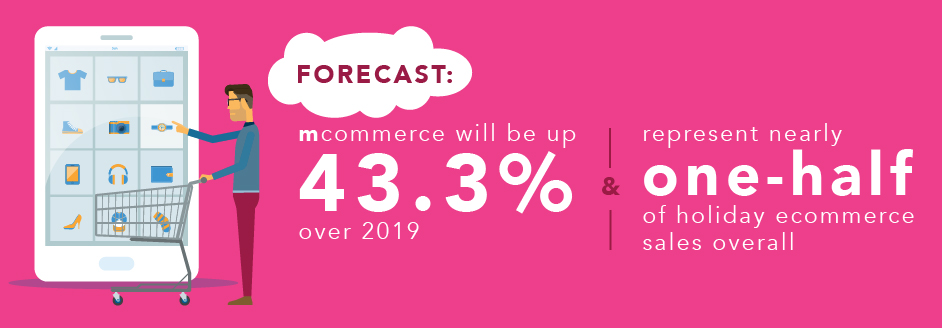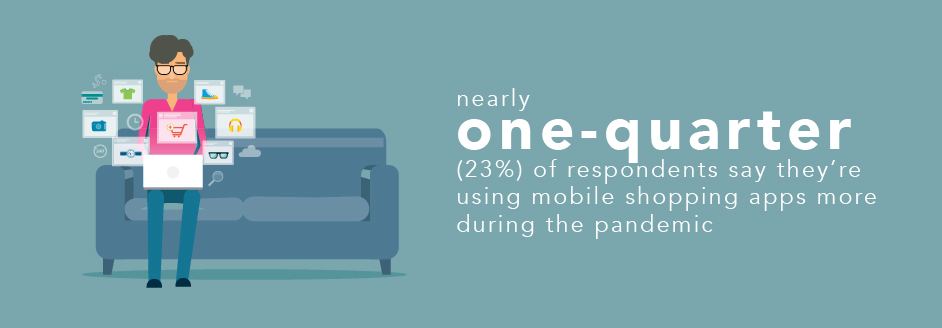Black Friday has historically been a much-hyped start of the holiday shopping season. But 2020 is its own beast, and Black Friday as a standalone day just doesn’t feel like it holds the same cachet it once did. Same for Cyber Monday.
Brands and retailers get this – which is why we’ve been witnessing a bombardment of “Black Friday Now!” and similarly-themed ads on all platforms for weeks, if not months now. While both days book-end a critical holiday shopping weekend for sure, one could actually argue that Amazon Prime Day in mid-October, the exclusive online event rescheduled from July, is really when the 2020 holiday shopping season effectively started.
Interestingly, consulting firm AlixPartners added October to its holiday forecast for the first time ever. And despite what may wind up being an extended season, forecasts generally project less overall sales growth this year versus last – such as Deloitte’s forecast of a 1.0% to 1.5% rise over 2019. As a point of comparison, holiday sales grew 4.1% last year over 2018.
But while overall sales growth is lagging compared to prior years, all signs point towards a very busy season for online shopping.
Boosted by Mobile, Online Commerce is Up Big Time
We posted a blog this past April called How to Refocus Your Brand in the Face of Uncertainty that included a key takeaway — “Meet them where they are.” This absolutely holds true for the 2020 holiday shopping season.
It’s no secret that consumers are shopping online now more than ever before. In fact, Adobe Analytics predicts a whopping 33% increase in online holidays sales this year versus last – which is actually equal to two years’ worth of holiday ecommerce growth.

Mobile commerce (m-commerce), as a share of e-commerce overall, is poised to have its biggest year ever with driving holiday sales. In fact, eMarketer forecasts that m-commerce will be up 43.3% over 2019 and represent nearly one-half of holiday e-commerce sales overall.
What’s driving this? Consumers are relying on and are using mobile devices for day-to-day living like never before. Brands and retailers have figured this out and are adapting too, out of necessity.

Brands Relying on Apps and Social Media Marketing Now More than EveR
New research shows that mobile app usage surged 25% in the third quarter of 2020, and another recent study echoed those results with similar findings: nearly one-quarter (23%) of respondents say they’re using mobile shopping apps more during the pandemic, and more than one-third (36%) indicate they’re using social media more on their mobile devices. Social media in particular is playing a key role for brands and retailers in the COVID era – especially in the area of driving brand awareness.
Herein lies the key to success, and perhaps, survival of the fittest.

Whether it’s within apps, on mobile browsers, or within social media, brands and retailers must offer valuable and relevant content where – and when – consumers are in need of it.
And it’s essential that these top-of-funnel content/awareness strategies have a direct line to lower-funnel consideration and conversion strategies.
This increase in mobile usage also means that brands and retailers must strategically shift ad spend from desktop to mobile wherever it makes sense – especially with social ads, as the majority of those are viewed specifically on smartphones.
Simply put, brands and retailers that adapt to maximize the consumer mobile experience this holiday season will be best positioned to reap the benefits of the medium’s capabilities for driving revenue growth.

How Brands are Adapting to Changing Shopper Behavior
Some brands and retailers got ahead of the curve this year by changing the way they allow their customers to shop.
Walmart introduced its “Scan & Go” mobile service late this summer in an effort to meet consumer demand – and perhaps to act as a lead-in to the holiday shopping season. “Scan & Go” allows consumers to shop and check out in Walmart locations on all the mobile device. Users simply use the Walmart app to scan the barcodes of the items they’re purchasing and then use self-checkout on the way out to pay. It’s not only convenient, but it’s completely contact-free. And that gives consumers peace-of-mind and helps them feel safe.

Walmart is not alone in adapting to meet consumers’ needs. As noted in a recent Forbes article, brands and retailers are building out their digital capabilities with improved apps and online shopping experiences. Those with strong digital offerings (including intuitive mobile browsing and simple payment options) will come out on top.
Brands and retailers alike are also embracing augmented reality (AR) apps, and AR is poised to be a key player this holiday shopping season.
As noted recently in the Harvard Business Review, AR applications have been on the rise with virtual “try-before-you-buy” experiences ranging from previewing furniture and products in your home with everyday brands like IKEA and Home Depot, to virtually trying on luxury fashion such as Louis Vuitton and Gucci.
Earlier this year, retailer Kohl’s collaborated with Snapchat to create Kohl’s AR Virtual Closet. Using a smartphone and the Snapchat app, consumers can step inside an AR dressing room, mix and match items, and make a purchase without ever leaving the app (or their home).
Ralph Lauren also collaborated with Snapchat in the wake of COVID-19 to enhance the consumer experience by elevating its brand storytelling and redefining commerce capabilities.
The collaboration introduced virtual branded apparel inspired by real Ralph Lauren looks and shoppable styles to match consumers’ personal Bitmojis. In releasing the news, the brand noted they felt inspired to “explore disruptive ways to tell our brand’s story, drive social commerce and engage with a new generation in an authentic and empowering way.”
Silver Linings in an Unprecedented Environment
Thanksgiving itself will be very different this year for many people. On top of that, holiday shopping pastimes of yesteryear will also be noticeably absent. Gone will be the decidedly physical, socially non-distant, and sometimes literal doorbusters. But herein lies the opportunity for brands.
As eMarketer laid it out in its new Holiday Shopping 2020 report:
“WITH SUCH RADICAL CHANGES IN CONSUMER BEHAVIOR, MARKETING STRATEGISTS AND CREATIVES GET TO TAP INTO THE CURRENT ZEITGEIST … SOPHISTICATED DIGITAL MARKETERS CAN DISCOVER ATTRACTIVE MEDIA ARBITRAGE OPPORTUNITIES, AND AN ELONGATED SHOPPING SEASON ENABLES BRANDS TO CULTIVATE AFFINITY AND LOYALTY WHILE DRIVING HOLIDAY SALES.”
Simply put, we as marketers have a distinct opportunity to reset/rethink strategy and execution in a (soon to be, fingers crossed) post-pandemic world. Many of these changes – these adaptations – are ultimately for the betterment of the consumer experience, and they will likely stick around for the long term. Perhaps that will prove to be the greatest gift of all.
